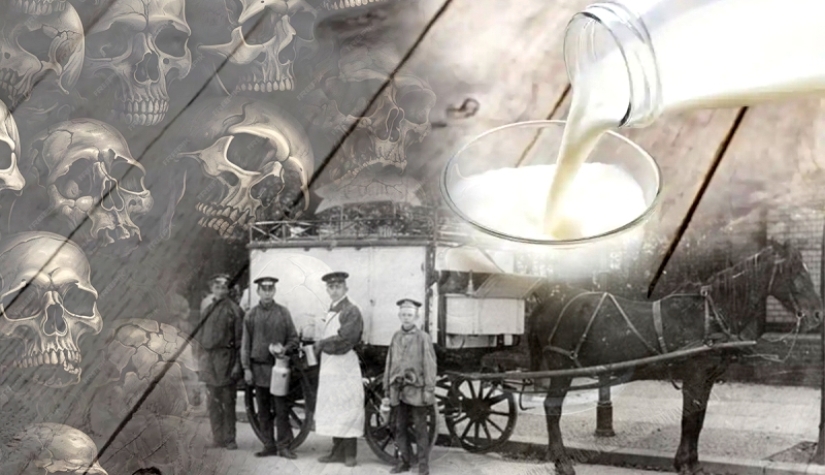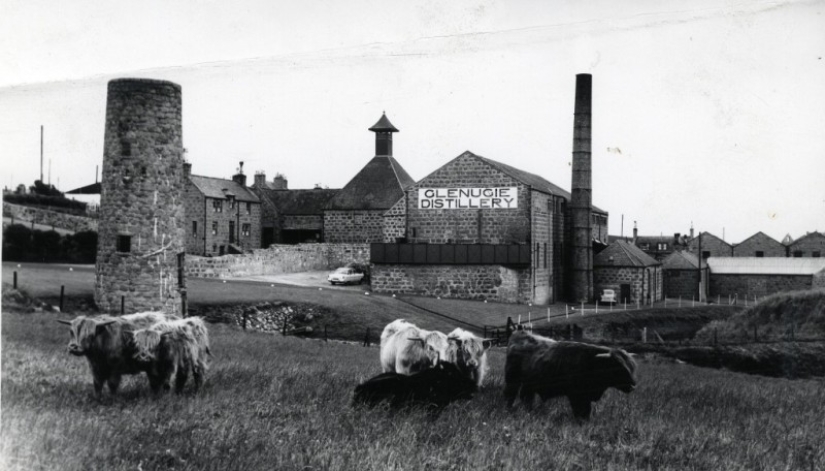The story of the poisoned milk that killed thousands of American babies
Categories: Food and Drinks | Health and Medicine | History
By Pictolic https://pictolic.com/article/the-story-of-the-poisoned-milk-that-killed-thousands-of-american-babies.htmlMilk is an integral product of baby food. No one doubts the benefits of this drink for a growing body. Of course, if it is of high quality, which is not always the case. The story of poisoned milk is one of the terrible pages of US history. In the mid-19th century, milk, which was supposed to bring health, killed thousands of babies.

In the 1850s, a strange epidemic broke out in New York. The disease, the origin of which could not be determined by the most experienced doctors, affected the youngest residents of the city. For several years, 8 thousand babies died annually in the city and its environs. They all had the same symptoms - diarrhea that could not be stopped by any medications.

Diagnostics in the 19th century was in its infancy. Therefore, doctors had to base treatment on guesswork. Some believed that a new type of cholera was killing children, some blamed poor nutrition, and others blamed poor-quality drinking water. Oddly enough, the cause of the strange disease was found not by a doctor or a scientist, but by an ordinary New York journalist, Frank Leslie.
Leslie began his own investigation in 1858 and very quickly received an answer to all his questions. The culprit was cow's milk, which contains components toxic to the child's body. It turned out that in pursuit of profit, farmers fed waste from Manhattan and Brooklyn distilleries to cows. The animals were given thick mash left over from the production of strong alcoholic drinks.
In the first half of the 19th century, many American women were forced to wean their babies prematurely. This was due to social and economic pressure on the fairer sex. Both women from poor areas, forced to work a lot and hard, and ladies from the middle class switched their children to cow's milk. The latter took too active part in public life, and besides, they were afraid that breastfeeding would ruin their figure.

In the early 1820s, a new brand appeared in New York - Pure Country Milk. Vans with advertising on board scurried through the streets, and brand shops opened in all areas of the city. But entrepreneurs are faced with a serious problem in delivering a delicate, perishable product. Most of the dairy farms were in Orange and Westchester counties, from where the product had to be transported to the city.
For large volumes of transportation, the railway was then used. But the milk quickly spoiled in the stuffy carriages, and the business suffered huge losses. There were attempts to organize farms within the city, but they failed. Even then, in the dynamically developing New York, there was too little space for pastures, and the land was worth fabulous money.
The city distillers found a way out of the situation. They added sheds to the outer walls of their factories, under which they began to keep cows. The animals were fed with hot spent wort, which the cows willingly ate. Thus, waste that previously had to be disposed of began to bring in solid profits.

According to unverified information from sources of that time, cows on such a diet produced 5 or even 25 times more milk than when fed grass. The figures in different documents vary greatly, but in any case the profit was huge. True, the unusual diet affected both the condition of the livestock and the quality of the milk.
Cows fed distillery waste were weak and covered in ulcers. Many of them lost their tails, which simply rotted away. They gave liquid milk with a blue tint. It was difficult to sell such a product, so urban farmers resorted to all sorts of tricks. Crushed chalk, eggs, flour and even gypsum were added to milk, improving its appearance and consistency. However, similar tricks were practiced at that time in the Russian Empire, where counterfeiting of products was also at a high level.
Historian Richard A. Menkel estimates that in the 1830s, up to 80 percent of cow's milk in the Northeast was this kind of ersatz swill. Politician and reformer Robert Hartley tried to influence the situation in the 1840s. But he was accused of excessively dramatizing the situation. Everything was complicated by the fact that wealthy distillery owners had serious influence in society and could influence politicians.

Even rare checks did not bring results. Warned businessmen locked cows in windowless shacks, and raids found nothing suspicious. Few people linked the epidemic to conditions on urban farms. In most cases, the deaths of children were attributed to infectious diseases, about which little was known at that time.
But in 1858, Frank Leslie's Illustrated Newspaper made a series of sensational publications. They were accompanied by visual illustrations, and their essence was clear even to semi-literate people. Leslie talked about poisonous milk and published maps. On them, the journalist identified shops with the deadly drink and the factories where it was produced.

Photography was a complex technology back then, requiring long exposure times and the use of bulky equipment. Therefore, Leslie created visual information with the help of draftsmen. Skilled pencil masters entered distilleries and sketched what was happening there. The drawings showed unsanitary conditions and Irish milkmen selling a deadly cocktail.
Frank Leslie's work was not in vain. Soon crowds of angry townspeople began to gather near the distilleries. The City Council responded and sent teams of New York aldermen to the scene. But the businessmen, who were warned, managed to remove traces of their activities. Inspectors saw clean pens containing few animals that appeared healthy.
As a result, no violations were found, and urban farmers were only recommended to improve ventilation in their barns. But Leslie did not back down. Despite minimal support in ruling circles, he achieved the introduction of milk standards by 1862. The situation has improved significantly, but adulterated milk has not disappeared. It continued to be sold in some places until progress solved the problem.

With the advent of pasteurization technology and the invention of refrigeration equipment, everything returned to normal. Milk began to be brought by rail from the countryside. The dairy issue was finally resolved in 1906 when Congress passed the Pure Food and Drug Act. From this point on, the production, sale and transportation of adulterated or mislabeled foods, drugs, medicines and alcohol were strictly prohibited.
Unfortunately, the problem of dangerous goods has not only not disappeared over time, but, on the contrary, has become more widespread. We don't always know what is actually contained in a particular product. Manufacturers, in turn, carefully hide their true composition.
Recent articles

In the fall of 1972, Bill Yates traveled through the countryside in the vicinity of Tampa, Florida. At that time, he was studying ...

Severe cold weather does not give up its positions. We offer you to admire the magical photos of winter Europe, because snow and ...

Vladimir Lyubarov is an artist from the countryside who paints pictures of real life. But he brings amazing characters, birds, and ...